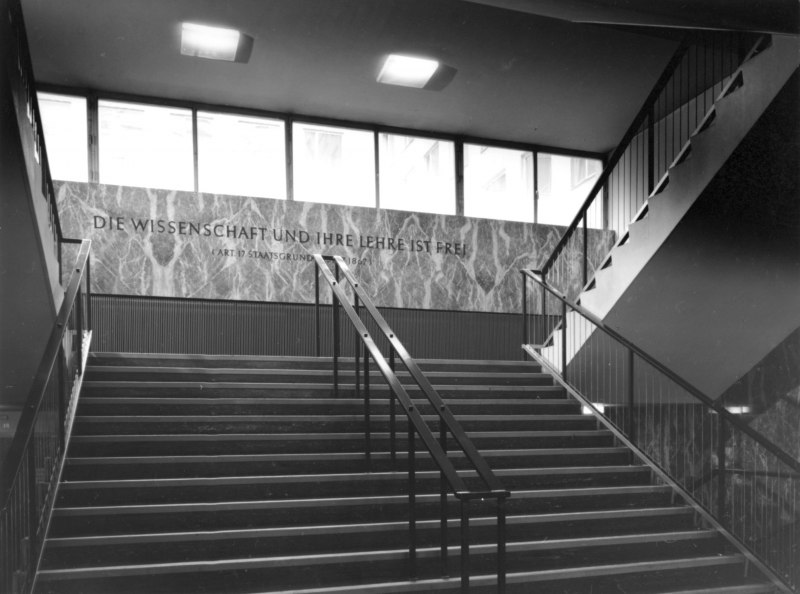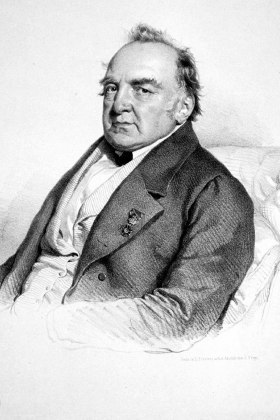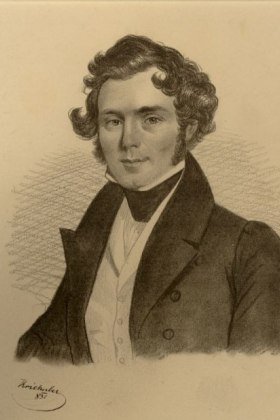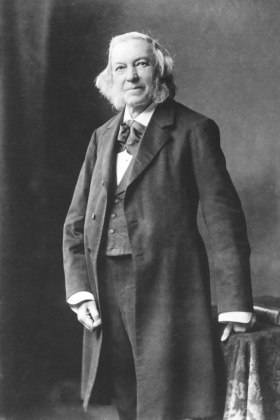Freedom of Teaching and Learning
On March 12, 1848, a student assembly passed a resolution to write a petition to the Emperor, in which, among other things, they demanded freedom of teaching and learning. This appeal, later joining the history of the revolutionary year of 1848 as the “student petition”, triggered a much-needed reform of Austria’s whole educational system.
The principle of academic freedom – already established as “libertas philosophandi” at many German universities (Halle, Göttingen, Jena) – was, along with civil liberties (freedom of press, freedom of speech, freedom of religion etc.), one of the main catchphrases of the liberal demands for reform in Vienna of the revolutionary year 1848. This principle was usually referred to as a unified whole – “freedom of teaching and learning” – but in fact referenced two separate areas: freedom of teaching (freedom of science and its teaching) and freedom of learning (freedom of study).
Freedom of teaching
Since Joseph II and Maria Theresia’s reforms, teaching at the university was strictly bound by state rules (appointment of professors, text books, curricula, supervision of lectures, etc.). The introduction of freedom of teaching meant that those who had received their teaching license (venia docendi) as professors or private lecturers in a main scientific subject were allowed to freely present their own topics and schools of thought in their subjects. The academic teacher had to “only answer to his own conscience”. He was, however, obligated to review and justify his views in light of new findings or questions that might arise.
Freedom of study
The demand for freedom of study concerned several aspects. An important topic in 1848 was the suspension of semestral and annual exams which were obligatory for advancing to the next year and for receiving certain benefits (accommodations, scholarships, exemptions from tuition fees) and were hated by the students. Another demand was the right to complete courses in any desired order and time and to be able to freely choose one’s teachers. With the general study regulations from October 1, 1850, the annual and semestral exams were dropped. Attending foreign universities that also followed the principle of freedom of teaching and learning was now also allowed.
Introduction of freedom of teaching and learning
The student petition from March 12, 1848, initiated a long overdue reform of the whole Austrian educational system and the transformation of the “Alma Mater Rudolphina” to a modern university for teaching and research. Franz von Sommaruga, the first Austrian Minister of Education, announced the widely demanded academic freedoms, as well as a restructuring of the educational system on March 30, 1848 in the aula of the university. To achieve this, he reassigned Franz Seraphin Exner, a philosophy professor from Prague, to the new ministry in Vienna. Exner soon became the driving force of the reform. As early as summer 1848 he presented the “draft of the outline of the public educational system in Austria”, which became the basis of the educational and university reform implemented by the later minister of education Thun-Hohenstein (1849-1860). Exner’s ideas were guided by the successful Prussian educational model, which had been practiced for decades on the basis of freedom of teaching and learning and the combination of research and teaching. At the same time, he recognized that the Habsburg monarchy did not have enough qualified personnel for a “new university” that was supposed to conduct scientific research and teaching, while also guaranteeing freedom of teaching and freedom of study. This was attempted to be amended by appointing new foreign professors, especially from Germany. On the other hand, the Austrian young talent was to be supported by introducing the habilitation of private lecturers. A great help in this endeavor was the appointment of the Protestant high school teacher Hermann Bonitz as professor of classical philology, who developed the concepts of the reform together with Exner. Newly founded seminaries, institutes, laboratories and clinics were meant to acquaint the students with scientific research.
“Die Wissenschaft und ihre Lehre ist frei” (“Science and its teaching are free”)
The student demands for freedom of teaching and learning from 1848 were already mostly met in the provisional reform laws under minister Thun-Hohenstein. What is more, freedom of teaching reached a constitutional level with the Staatsgrundgesetz of December 21, 1867: “Science and its teaching are free” (art. 17). The university reforms started in the revolutionary year of 1848 found their preliminary conclusion and a forward-looking codification with the law on the organisation of the academic authorities from April 27, 1873. The remnants of the medieval corporative constitution were eradicated with the elimination of the doctoral councils. The universities were seen as public institutions with the purpose of scientific research and teaching, without their position as legal entities explicitly being rescinded. Clerical influence was pushed back; the position of chancellor was restricted to the Faculty of Catholic Theology. Apart from an interruption during National Socialism, the law remained in effect until the Law on University Organisation was passed in 1955.
Zuletzt aktualisiert am 05.03.2024 - 21:04
-
Maria Theresia von Österreich (Habsburg)
13.5.1717–29.11.1780 -
Joseph II. von Österreich (Habsburg-Lothringen)
13.3.1741–20.2.1790 -
Franz Seraph Freiherr von Sommaruga
18.4.1780–2.10.1860 -
Franz Serafin Exner sen.
28.8.1802–19.6.1853 -
Leo Graf von Thun-Hohenstein
7.4.1811–17.12.1888 -
Hermann Bonitz
29.7.1814–25.7.1888









